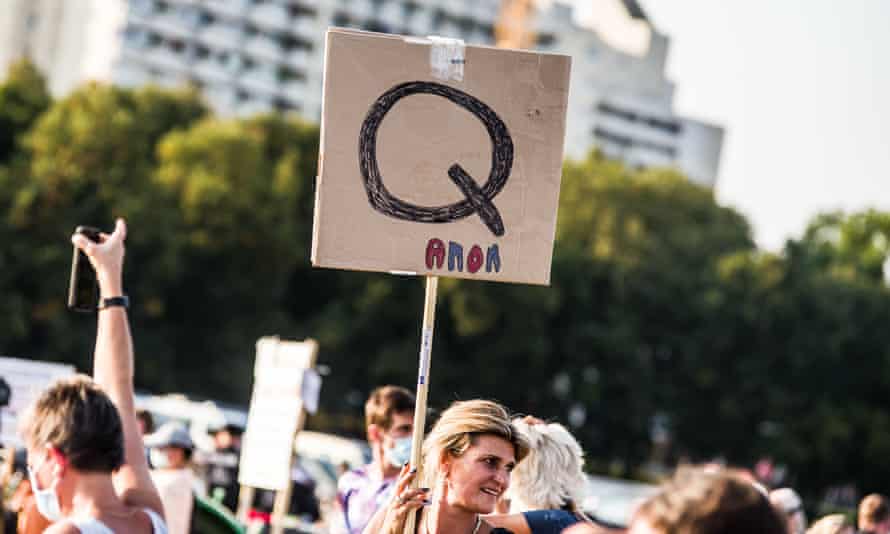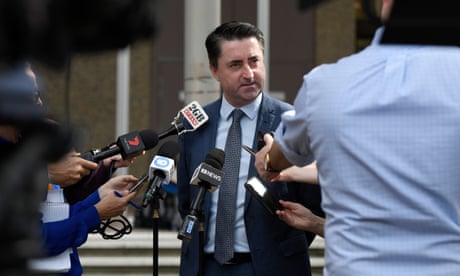Extract from The Guardian
The ABC’s Four Corners has delayed airing a program about the prime minister’s connection to a QAnon figure, but much of the detail is already on the public record.

Last modified on Mon 7 Jun 2021 17.55 AEST
It has been two years since the public first learned of the prime minister, Scott Morrison’s, connection to a prominent Australian proponent of the fringe QAnon conspiracy theory.
Last week, the story made an unexpected comeback, courtesy of the ABC’s crack investigative team at Four Corners and a controversial decision to delay a program about it.
So far, it is unclear what more Four Corners has uncovered since Guardian Australia first broke the story in 2019.
A lot of detail is already in the public domain, thanks largely to the initial stories by Guardian Australia and later reporting by Crikey.
What do we know so far?
Let’s start with the basics. What on earth is this story all about?
The story, at its core, is simple.
The prime minister, Scott Morrison, has a family friend named Tim Stewart, who also happens to a prominent figure in the Australian QAnon scene.
For the uninitiated, QAnon is a bizarre and convoluted conspiracy theory that posits that Donald Trump is waging war against a secret deep state, which is intent on covering up satanic paedophile rings.
The theory’s protagonist, an anonymous internet forum user named “Q”, leaves clues on internet message boards like 8Chan for his followers to decipher.
The FBI has previously warned that QAnon could act as a potential motivator for “domestic extremists”.
Experts say it can risk leaving followers polarised and shut off from the outside world, making them unpredictable and struggling to separate reality from fiction.
QAnon proponents were a visible presence during the storming of Capitol Hill in January.
One of those proponents, Jacob Chansley, the so-called QAnon Shaman, is currently before court, where his lawyer has likened his immersion in QAnon to brainwashing or becoming trapped in a cult. His lawyer argued repeated exposure to falsehood and incendiary rhetoric had made it hard for his client to discern reality.
Who is Tim Stewart?
Before Twitter deleted the account last year, Stewart tweeted under the handle of @BurnedSpy34, amassing 21,000 Twitter followers in his first active year.
He was regularly praised by QAnon followers and achieved some fame among local adherents.
BurnedSpy34’s tweets contained bizarre and disturbing content, sometimes targeted at Morrison’s colleagues or former colleagues.
At one point, BurnedSpy attempted to connect Julie Bishop to the conspiracy due to her wearing of red shoes, which he believed were a “shout out” to paedophiles.
Needless to say, such theories are baseless and wrong.
Guardian Australia revealed last year that Twitter had deleted the @BurnedSpy34 account for “engaging in coordinated harmful activity”. It had also taken action against other linked accounts.
What is Stewart’s connection to Scott Morrison?
The connection between Stewart and Morrison is driven by the close friendship between Stewart’s wife and the prime minister’s wife, Jenny Morrison.
Stewart’s wife works at Kirribilli House, but Guardian Australia understands this is not in any policy or advisory capacity. There is no evidence she shares her husband’s views.
Morrison and Stewart have been pictured together, beers in hand.
In 2019, Stewart confirmed the nature of his friendship directly to Guardian Australia.
“I’m not going to diminish the relationship, that’s not appropriate either. Yeah we’re friends. That’s good. People have friends.”
What evidence is there that Stewart has influenced, or attempted to influence, the prime minister?
Last week, Morrison reacted angrily to any suggestion that QAnon had influenced him in any way.
“I find it deeply offensive there would be any suggestion I would have any involvement or support for such a dangerous organisation. I clearly do not,” he said.
There are claims online about the ways that Stewart may have influenced Morrison, but Guardian Australia has been unable to independently verify or corroborate those accounts.
For his part, Stewart denied ever having had influence on Morrison. Last year, he said he had not attempted to influence Morrison or had conversations with him about any QAnon content.
“I have never spoken to Scott about anything of a political nature,” Stewart said. “I’m not an adviser. The idea of me talking to him about this…it’s just not true.”
Why is this story important?
The public interest demanded this story be told for a number of reasons.
Labor’s Penny Wong articulated the chief reason during Senate estimates in October.
She said she was pursuing questions about the matter to ensure there was no “vector of influence” with Morrison given the “dangerous” elements of QAnon and the concerns of the FBI.
“We do have on the public record now reports that the prime minister has an association or a friendship with someone who is associated with a dangerous fringe conspiracy movement,” she said. “I’d suggest there is a public interest in responding to that.”
There is public interest in understanding the nature and closeness of the association between Stewart and Morrison and understanding the process that underpinned Stewart’s wife’s employment at Kirribilli House.
The prime minister’s department assured it took “all proper measures to make sure that that person was suitable for that employment including, the relevant police checks”.
What do we know about the Four Corners program?
So what is there left to tell?
Award-winning journalist Margaret Simons reported on Sunday that she understood the episode to be “interesting, rather than revelatory”.
But there are unresolved questions in this story that Four Corners, with all of its resources, is well placed to shed new light on.
That is, of course, if its story gets to air.

No comments:
Post a Comment